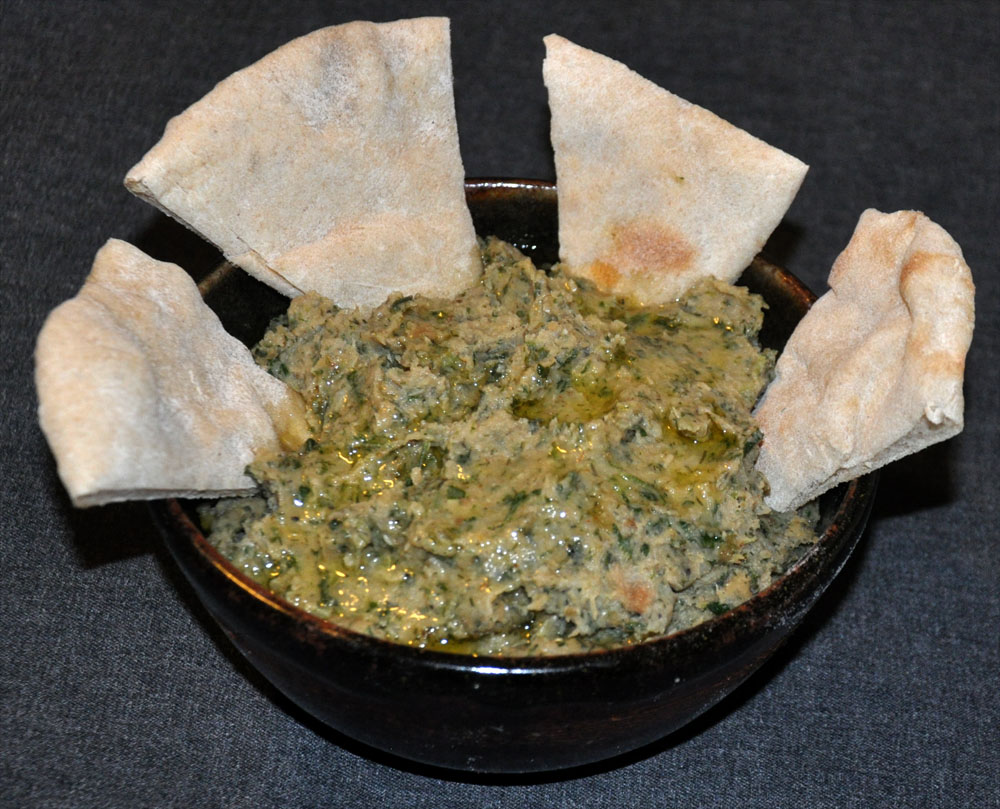
Egyptian Bissara
Bissara is in some ways the Egyptian / Maghreb equivalent of hummus, as both are garlicky pulse pastes that are eaten as a dip for khoubz (pita) bread. But they really ought not to be confused: while hummus is a rather simple concoction of garbanzos, tahini, garlic, olive oil and lemon juice, bissara is made from fava beans and supports a much more complex flavor profile including cooked onions, various greens, herbs, and seasonings. And, as it has no tahini, it is a safe dish for those with sesame allergies. We were also stuck at how similar the making of bissara is to the making of refried beans: Both represent flavored pulse pastes that are cooked in oil and flavorings to bring out their flavor. A potential link between these two dishes should probably not be surprising given the strong Moorish influence in Spanish cooking, which was then brought to the New World and adapted to New World ingredients (common beans included) by the Spanish settlers. The following is an adaptation of a bissara recipe presented by Clifford Wright in his 2001 cookbook, Mediterranean Vegetables. 1 pound skinned, broken dry fava beans Cover fava beans in a medium-size pot with 6” water, bring to a boil, lower heat to a simmer, and gently cook for 1 ½ – 2 hours or until tender. Drain beans, reserving 1 cup of the cooking water. Heat 3 tablespoons olive oil in a large pan until hot. Sauté onions until golden brown, at least 15 minutes. Then add in roasted garlic pulp, dill, cilantro, parsley, and mint. Sauté for another 3-4 minutes until the herbs have collapsed into the onions. Add in the ground cumin, coriander, cayenne, salt and black pepper. Sauté another 1-2 minutes until the mixture becomes fragrant from the spices. Combine cooked favas and onion mixture and puree using a food processor or blender until the mixture is almost smooth. Return onion-cooking pan to a medium-high temperature. Add in the remaining 3 Tablespoons olive oil and when hot, add in the fava/onion/herb mixture. Sauté the paste, stirring constantly, until it is well blended and flavorful, at least 5 minutes. Remove from heat, place paste into a serving bowl, and top with a drizzle of olive oil. Serve with khoubz. Archive |
